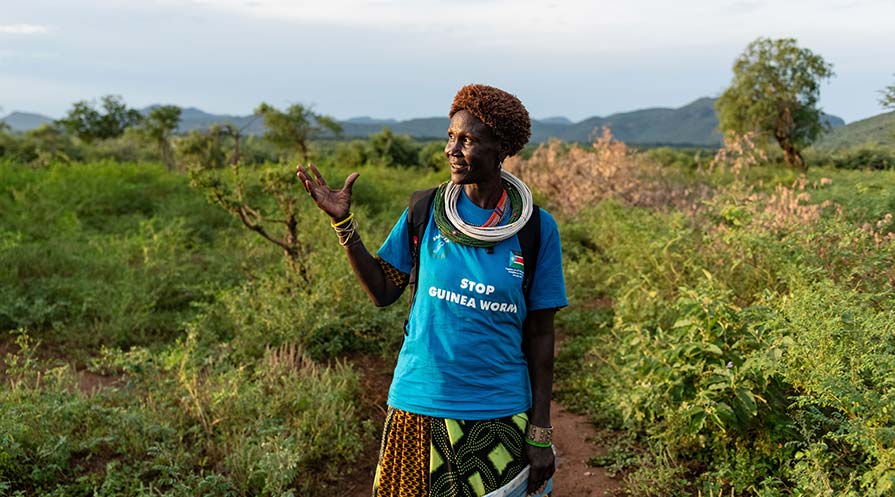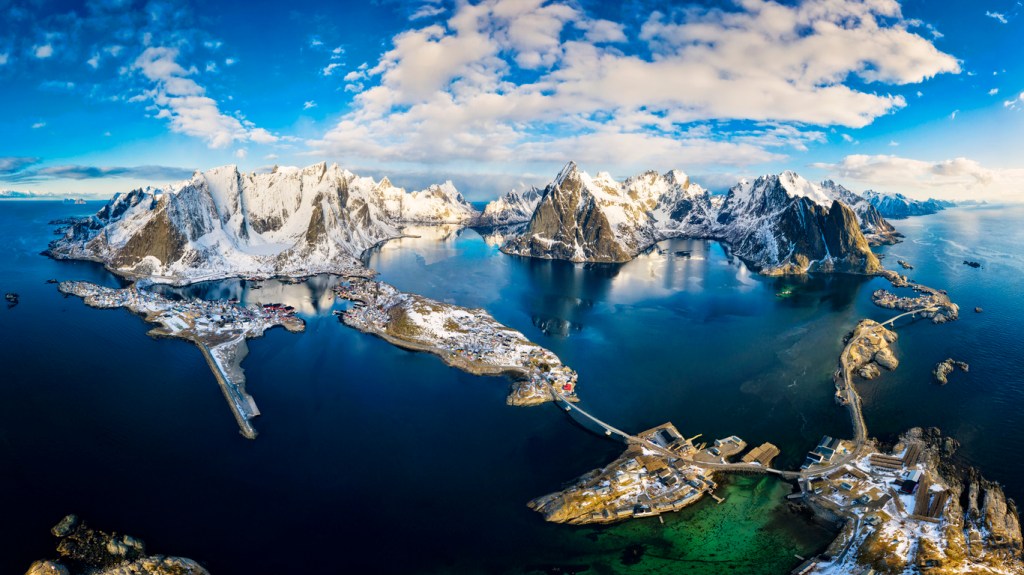As we reach the end of a year, it’s often easy to recall all the trials and tribulations that occurred over the last 12 months. But Nice News is here to remind you that there was lots of good, too.
Below, we’ve compiled 10 positive stories from 2023 to highlight some positive developments from around the globe Hopefully it provides you with a dose of optimism as we prepare for 2024 (and the hope that there’s more uplifting news to look forward to!).
Deforestation in Brazil’s Amazon Was Way Down

The Amazon rainforest has long been a prime example of the importance of fighting climate change — the essential ecosystem (and carbon sink) has suffered from devastating deforestation, fires, and more over recent decades. But 2023 proved to be a banner year for Brazil’s portion of the rainforest.
In August, the country’s Ministry of the Environment and Climate Change shared that deforestation in the rainforest was down 66%, its lowest level for the month since 2018. The milestone was especially significant given that August typically sees high levels of destruction due to dry weather.
“It is a clear sign that the government’s actions have been effective,” Mariana Napolitano, the director of strategy for WWF-Brazil, said in a translated press release. She specifically mentioned successful campaigns against land grabbing, invasion of public lands, and mining, all of which threaten the Amazon.
By November, it became clear that August wasn’t an anomaly: Officials announced then that deforestation fell 22.3% from August 2022 through July 2023.
Harvard Researchers Found the Key to Happiness


Happiness is an amorphous concept, one that means something different to each individual person. But this year, Ivy League researchers seemed to get as close as they could to nailing down that elusive “key to happiness” — and it all has to do with our connections to one another.
The Harvard Study of Adult Development — also known as the happiness study — first began in 1938 and is still going strong, with a remarkable 84% participation rate. It has tracked 724 men as well as more than 1,300 of their male and female descendents in search of what keeps people happy and healthy. And after 85 years, the answer appears clear: maintaining close relationships with loved ones.
It seems simple, but as researchers Robert Waldinger and Marc Schulz laid out in their book, The Good Life: Lessons From the World’s Longest Scientific Study of Happiness, the benefits of spending meaningful time with our fellow humans are numerous — with “ties to physical health, mental health, and longevity.”
“Over and over again, when the participants in the Harvard Study reached their 70s and 80s, they would make a point of saying that what they valued most were their relationships with friends and family,” the duo write, per an excerpt published in The Wall Street Journal in January. “If we accept the wisdom — and, more recently, the scientific evidence — that our relationships are among our most valuable tools for sustaining health and happiness, then choosing to invest time and energy in them today becomes vitally important. It is an investment that will affect everything about how we live in the future.”
RELATED: From Smiling to Sleeping: 10 Ways to Feel Happier, According to Science
Guinea Worm Disease Got Close to Eradication

The World Health Organization declared in 1980 that smallpox had officially been wiped out, thanks to successful vaccination campaigns around the globe. In 2023, another illness got on track to become the second-ever infectious disease to be eradicated, and the first to reach the milestone without medicine or a vaccine.
Last year, there were only 13 total cases of Guinea worm disease worldwide, all in African nations. The provisional number, shared by the Carter Center, marks the lowest annual count ever reported. Hopes of full eradication come after decades of efforts to improve drinking water quality and educate communities about prevention methods.
Regina Natube has been working on the latter in her native South Sudan. Natube, who previously suffered from the painful illness, travels around the country to teach people about Guinea worm disease through a catchy song and dance.
“Our partners, especially those in the affected villages, work with us daily to rid the world of this scourge,” former President Jimmy Carter, who co-founded the Carter Center, said in a statement. “We are heartened that eradication can be achieved soon.”
Montana Youth Won a Landmark Climate Case

The power of young people was on full display in 2023, seen everywhere from the massive economic impact of Taylor Swift’s fan base to the Oxford word of the year to the Montana youths who took to court to fight for their future — and won.
The plaintiffs in Held v. Montana, ranging in age from 5 to 22, went up against a provision in the Montana Environmental Policy Act that prevented the state from considering the climate when approving fossil fuel projects. They argued that the provision went against the Montana state constitution, which guarantees them the right to a “clean and healthful environment.”
In August, the judge presiding over the case ruled in their favor. “This is a huge win for Montana, for youth, for democracy, and for our climate,” Julia Olson, the executive director of Our Children’s Trust, which brought the case, told The Washington Post. “More rulings like this will certainly come.”
The case was the nation’s first constitutional and first youth-led climate lawsuit to go to trial, and the victory could have major implications for the environment beyond the Big Sky State.
America’s Gender Pay Gap Hit an All-Time Low

July statistics from the Department of Labor showed that America’s gender pay gap had shrunk 22% since 1979, meaning it had hit at an all-time low.
In the second quarter of 2023, women made 84 cents for every $1 dollar men made for similar work, compared to 62 cents in 1979. Though there’s still progress to be made — and women of color continue to suffer the most severe pay disparities — the shrinking gap is a heartening trend.
“Norms are changing, more fathers are participating in child care, and women are increasingly entering male-dominated fields like construction and computer-related fields,” Julia Pollak, the chief economist at ZipRecruiter, told CBS News at the time, adding that government policies like expanded paid family leave and child care subsidies are key to closing the differential for good.
Most encouraging is that the pay gap is smaller for women between the ages of 16 and 24. “The younger generation of women are seeing themselves as career women first, and they are demanding to be treated equally in the workplace,” Pollak said.
Scientists Discovered 380 New Species in Southeast Asia

The Earth is a vast, mysterious place, which makes it primed for new discoveries of plants and animals. In May, the World Wide Fund for Nature announced that scientists had found 380 new species — one mammal, 46 reptiles, 24 amphibians, 19 fishes, and 290 plants — in a single remote region of Southeast Asia.
“These remarkable species may be new to science but they have survived and evolved in the Greater Mekong region for millions of years, reminding us humans that they were there a very long time before our species moved into this region,” K. Yoganand, the WWF-Greater Mekong regional wildlife lead, said in a press release. “We have an obligation to do everything to stop their extinction and protect their habitats, and help their recovery.”
The species include a miniature orchid “with brilliant pink and bright yellow coloring,” a gecko that opens its mouth wide when threatened, and the Cambodian blue-crested agama, which can change color as a defense mechanism. They make up a diverse ecosystem, one that conservationists say must be protected.
Baby Born From Transplanted Uterus Outside of Clinical Trial

The first baby born from a transplanted uterus outside of a clinical trial entered the world this past May, and doctors shared the details of the medical marvel in July. Mom Mallory, who used only her first name for privacy reasons, was born without a uterus due to a congenital condition called Mayer-Rokitansky-Küster-Hauser syndrome.
After welcoming her first child with husband Nick via a surrogate, she began to explore uterine transplants. And with the help of the medical team at the University of Alabama at Birmingham Hospital, Mallory was ultimately able to make her dream of carrying a biological child a reality.
“I mean just hearing the cry at first was just, you know, mind-blowing,” she said of the moment she met her baby boy. “When Dr. Porrett visited us in our hospital room and saw our son, it just felt so surreal, it was full circle. We did it.”
The transplant, pregnancy, and birth also represent “an incredible milestone” that will open doors for other parents struggling with infertility, the hospital’s Dr. Paige Porrett said in a news release. “This birth is evidence that reassures us that this emerging technology — this innovative therapy — that’s been needed for so long really, truly works,” Porrett said.
Astrophysics Papers Changed How We View the Universe

After much anticipation from astrophysicists and science enthusiasts, multiple papers published by research teams all over the world in June revealed a major discovery that redefines the universe as we know it.
Building off Albert Einstein’s general theory of relativity, scientists observed gravitational waves throughout space and time, suggesting the universe “looks like a choppy sea, churned by violent events that happened over the course of the past 13 billion-plus years,” as described by Washington Post science writers Joel Achenbach and Victoria Jaggard.
“What we measure is the Earth kind of moving in this sea. It’s bobbing around — and it’s not just bobbing up and down, it’s bobbing in all directions,” said Michael Lam, a member of the North American Nanohertz Observatory for Gravitational Waves, or NANOGrav, which gathered data from the Green Bank Telescope in West Virginia, as well as nearly 30 others.
NANOGrav data was used in the five papers released in unison, part of a collaborative effort to not have any one team of physicists scoop the others, as researchers from Europe, India, Australia, and China have also detected gravitational waves.
“We’ve been on a mission for the last 15 years to find a low-pitch hum of gravitational waves resounding throughout the universe and washing through our galaxy to warp space-time in a measurable way,” NANOGrav chair Stephen Taylor said at a press conference, per The Post. “We’re very happy to announce that our hard work has paid off.”
18 Cancer Patients Went Into Remission After a New Treatment

Cancer research is making incredible progress, and more people are surviving than decades past. A study from March was the perfect example of this progress, with about one-third of clinical trial participants — 18 individuals — going into remission.
The trial specifically focused on patients with two types of acute leukemia (NPM1 mutant and KMT2Ar) that account for about 40% of all cases. In total, more than half of participants showed some response to the drug, called revumenib, which targets the protein that helps the cancer grow and spread.
“The outcomes of patients with acute leukemia with these genetic abnormalities, especially when relapsed or refractory to treatment, [are] very poor — median overall survival is measured in months. New therapies are desperately needed to give these patients a meaningful therapeutic option,” co-senior author Dr. Eytan M. Stein told Medical News Today, adding that revumenib is a “very different” treatment method.
“For patients with acute leukemia who have undergone several previous treatments, this is a very encouraging result,” fellow co-senior author Dr. Scott Armstrong said in a press release.
A Global Treaty Pledged to Protect 30% of World’s Oceans by 2030

Also in March, United Nations members reached an agreement to protect Earth’s oceans — a milestone hailed by a Greenpeace spokesperson as “the biggest conservation agreement in the history of the world.”
In what has now been dubbed the High Seas Treaty, delegates from nearly 200 countries pledged to protect 30% of the world’s oceans by 2030 and dedicate more money to marine conservation. The final treaty came after two weeks of “tough negotiations” at the U.N. headquarters in New York, per a press release from the organization. It has actually been decades in the making, though: This is the first unified agreement on the topic since the Convention on the Law of the Sea in 1982, Axios reported.
“We only really have two major global commons — the atmosphere and the oceans,” marine biologist Rebecca Helm told the Associated Press, adding that “protecting this half of Earth’s surface is absolutely critical to the health of our planet.”
Nichola Clark, of the Pew Charitable Trusts, added that the treaty is “a once-in-a-generation opportunity to protect the oceans — a major win for biodiversity.”











